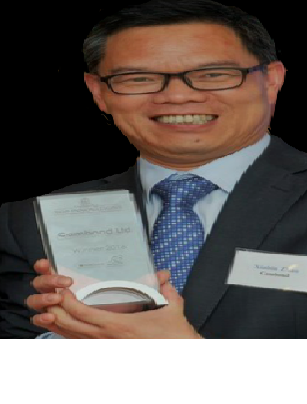Scientific Program
Keynote Session:
Title: Measuring bioplastic degradation
Biography:
He was the CEO to ECHO Instruments, In year 2019 the company is introducing a new Photo-respirometer for measuring influence of plastic materials in algae samples which simulate sea environment. This cutting-edge technology product will help to achieve a great step forward in understanding the influence of plastic materials in sea environment and test biodegradation under marine conditions.
Abstract:
An increasing number of countries in their regulation include the replacement of traditional plastic with ecofriendly products. In order to determine whether a product is biodegradable, it is essential to have the appropriate analytical technique and equipment. Biodegradable plastics are now emerging as one of the options available to solve such environmental problems. Plastic materials, such as products or packaging, which are sent to composting facilities should be potentially biodegradable. Therefore, it is very important to determine the potential biodegradability of such materials and to obtain an indication of their biodegradability in natural environments. ISO 14855-1:2005 specifies a method for the determination of the ultimate aerobic biodegradability of plastics, based on organic compounds, under controlled composting conditions by measurement of the amount of carbon dioxide evolved and the degree of disintegration of the plastic at the end of the test. This method is designed to simulate typical aerobic composting conditions for the organic fraction of solid mixed municipal waste. ECHO Instruments developed a multi-channel system which match standards for biodegradability testing and offer easy and economical solution for measuring biodegradability of bioplastic and plastic products. ECHO Instruments respirometer is used by accreditation institutions, bioplastic raw material and products manufactures, institutes, universities and research organizations for plastic, bioplastic and polymer research. In year 2019 the company is introducing a new Photo-respirometer for measuring influence of plastic materials in algae samples which simulate sea environment. This cutting-edge technology product will help to achieve a great step forward in understanding the influence of plastic materials in sea environment and test biodegradation under marine conditions.
Title: Novel Eco-Pallets Based on Natural Plant System
Biography:
Xiaobin Zhao: Co-Founder/CEO for Cambond Ltd. Obtained his BSc in Polymer Chemistry and MSc in Biomaterial Science in Nanjing University, China and PhD in Bioengineering Unit, University of Strathclyde in Glasgow. He has been working in the UK biomaterial industry since 1998. He is the inventor of Double X-Linking Technology (DXLTM) for Mentor Corporation, J&J and bio-adhesives for wood panel industry in Cambond. He has successfully commercialized more than 10 products globally. He is a UK chartered chemist and a Fellow of Royal Society of Chemistry, Fellow of Institute of Materials in UK and Society for Biomaterial in USA. He has published more than 60 scientific papers, book chapters and gained more than 30 patents on his name worldwide. He holds visiting professorship at University of Strathclyde and visiting professorship in both Changzhou and Lanzhou University in China.
Abstract:
Pallets have been called the single most important object in the global economy. More than four billion pallets are in use across the world with 1.8 billion manufactured annually. Nowadays, wood has more than 90% of the world pallet market, while plastics account for 10%, according to industry estimates. Pallet manufacture uses more than 100 million tonnes of wood per year, which is a considerable drain on forest resources. For plastic pallets, it consumes oil and also very expensive. Cambond has patented a technology platform to develop a plant based, formaldehyde-free bio-adhesive for wood panel industry. In addition to apply the technology for wood composite materials, Cambond has extended its technology to a detailed research on making plant-based bio-composite using various agricultural ‘waste’ biomass. The bio-composite material can be used to produce an innovative lightweight, high performance, and CO2 negative sustainable Eco-Pallet products from this green adhesive and bio-renewable wastes [Fig.1]. The products demonstrate a smooth surface, light weight, high performance and microbial and moisture resistance structure. The selected plant material wastes for this study include bamboo, jute, wheat fibers, rice straw fibers and reed fibers. The end products will be a low cost and environmental-friendly alternatives to traditionally used synthetic plastic pallets and wood pallets to meet industrial standards.
Title: Sustainability goals and how to reach 2025
Biography:
Christiane Waldron is the Business Development Director and the head of the newly formed Biopolymers Division at Kaneka Americas Holding, Inc. Christiane is a Chemical Engineer with more than 25 years of experience in the food, pharmaceutical and Biotech industries with special expertise in Bio-fermentation and process scale-up. Christiane has worked for Kaneka for 15 years.Kaneka has developed unique biopolymers that are not only Home and Industrially Compostable but also Marine Biodegradable. Kaneka has invested in the development of a unique plant based Biopolymer called PHBH and we are focused on helping brands meet their sustainability goals because we believe our oceans and our landfills need a break from environmental pollution.Recent findings show that consumers are very aware and sensitive to marine pollution and they are demanding action from corporations and legislature to help solve this problem. It is time to act and help our planet, our oceans and our children live in a better world.
Abstract:
The statistics are quite daunting, 400M metric tons of plastic produced every year and only 9% globally gets recycled, China is no longer accepting our materials to be recycled and the consumers are demanding action. What to do? Sustainability in Packaging is now more critical than ever and packaging that accidentally ends up in the ocean can damage a company's reputation. Redesigning packaging is crucial and looking at new packaging materials is going to get you more quickly to your 2025 goals. Plan B is investing in new Biopolymers that are compostable and in some cases biodegradable to help your company reach its sustainability goals.
* What are the new sustainable biopolymers
* How do these materials compare with traditional plastics
* Why would I want to invest in these materials
* What does the supply chain look like
* How do I get buy in from the business executives
Title: Powder cellulose nanocrystal (CNC) from industrial waste offcut cotton textile for a new sustainable nanofiller
Biography:
Toshihiko Arita completed his doctorate in physical chemistry at Kyoto University in 2003. After his graduation of Kyoto University, he started physical chemistry of polymers in Goettingen University as a postdoc fellow. He also spent his days in Institute for Chemical Research of Kyoto University as a post doctoral fellow. Dr. Arita currently belongs to Institute of Multidisciplinary Research for Advanced materials of Tohoku University as an Assistant Professor from 2007. He have been mainly studying polymer-surface-functionalized fillers produced by Polymerzation with Particles (PwP) technique[4] invented by himself.
Abstract:
Nano-sized cellulose has been collecting tremendous attention from polymer industry because of its environmentally friendly and sustainable nature as an industrial material. In addition, the physical properties such as superior physical strength, light density, and large aspect ratio of nano-cellulose are quite attractive for application as a novel reinforcing filler for polymers. Recently, we have developed a new procedure to obtain fine cellulose nanocrystal (CNC) powder preventing strong cornification on drying to form an irreversibly aggregated solid film by simple solvent exchanging from water to nonpolar organic solvent before homogenization of cellulose hydrolysate. In this study, we have studied more eco- and sustainability friendly raw material for CNC powder. That is offcut cotton textile, an industrial waste from shirts production. Offcut cotton textile was acid hydrolysed by hydrochloric acid and obtained cellulose hydrolysate is immersed in toluene. A slurry-like suspension was obtained via a homogenization. After simple air-drying of the slurry, fine powder similar to degreased cotton was employed as a raw material was successfully obtained. The newly developed CNC powder can be sustainable, eco-friendly, promising nanofiller for polymers.





